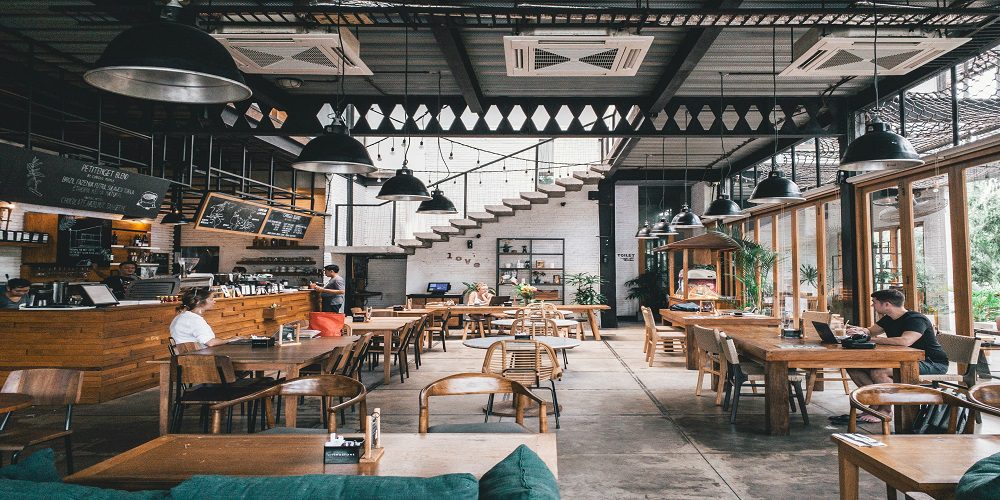Are you tired of the same old fast food joints and craving a culinary experience that will tantalize your taste buds? Look no further! In this blog post, we are diving headfirst into the fascinating world of restaurant classification. Join us on this gastronomic journey as we explore the spectrum from greasy burgers to exquisite fine dining.
Introduction
With the rise of social media and food blogging, the restaurant industry has become more competitive than ever before. In order to survive in this cutthroat market, it is essential for restaurants to have something that sets them apart from the rest. But what exactly makes a restaurant stand out? Is it the food, the ambiance, or the service? In this section, we will explore the key factors that contribute to making a restaurant truly exceptional.
One of the most important aspects of any restaurant is its food. While taste and quality are obviously crucial, there are other factors that can make a dish unforgettable. For instance, presentation plays a significant role in how people perceive and remember their dining experience. A beautifully plated dish not only entices our taste buds but also appeals to our visual senses. Additionally, unique and creative dishes can make a lasting impression on customers and set a restaurant apart from others.
Another factor that can elevate a restaurant’s status is its ambiance. The atmosphere of a restaurant can greatly impact customers’ overall experience. From decor to music selection to lighting, every element contributes to creating an atmosphere that reflects the theme or concept of the establishment. A well-designed interior with comfortable seating arrangements can make guests feel welcome and relaxed while they enjoy their meals.
Service is another crucial aspect that sets exceptional restaurants apart from mediocre ones. Attentive and friendly staff who go above and beyond to ensure customer satisfaction leave a lasting impression on diners. Great service also involves the timely delivery of food, knowledgeable servers who can recommend dishes based on customers’ preferences, and being responsive to any complaints or feedback.
Apart from these key factors, there are other elements that contribute to making a restaurant stand out, such as consistency in quality and innovation in menu offerings. Consistency ensures that customers receive the same level of experience each time they visit, while innovation keeps things fresh and exciting for regular patrons.
A combination of exceptional food, inviting ambiance, top-notch service, consistency, and innovation are what make a restaurant truly stand out. A successful restaurant is one that pays attention to all these aspects and strives to continuously improve and exceed customer expectations. In the following sections, we will delve deeper into different types of restaurants and explore how they differentiate themselves from others in this competitive industry.
The History of Restaurant Classification
The history of restaurant classification is a long and fascinating one, dating back centuries to the earliest establishments that served food to the public. As society has evolved, so too have our dining options, leading to the development of various types of restaurants and a need for categorization.
One of the earliest examples of restaurant classification can be traced back to ancient Rome, where taverns were designated as either mensae (for men) or popinae (for women). This division was based on societal norms and gender roles at the time. Similarly, in medieval Europe, travelers were often categorized as either nobility or commoners, with different establishments catering to each group’s needs and preferences.
During the 18th century in France, an important shift occurred in how restaurants were classified. Under Louis XV’s reign, new regulations required all Parisian eating establishments to display their menus publicly. This led to a more defined distinction between high-end restaurants serving elaborate dishes for wealthy clientele and simpler eateries serving affordable meals for commoners.
As industrialization took hold in Europe and North America during the 19th century, there was a growing demand for quick and inexpensive meals. This gave rise to fast-food restaurants such as cafeterias and luncheonettes catering to factory workers looking for a convenient meal on their lunch breaks.
In the early 20th century, fine dining became synonymous with luxury and sophistication, thanks to renowned chefs like Auguste Escoffier. These upscale restaurants were distinguished by their elegant decor, extensive wine lists, and multi-course tasting menus featuring exotic ingredients from around the world.
Types of Restaurants:
There are various types of restaurants that cater to different preferences, budgets, and dining experiences. In this section, we will delve into the most common classifications of restaurants: fast food, casual dining, fine dining, and more.
1. Fast food:
Fast-food restaurants are known for their quick service and affordable prices. They often have a limited menu, focusing on popular items such as burgers, fries, and soft drinks. These establishments usually have a counter where customers can place their orders at the cashier and then collect their food at a designated pick-up area. The emphasis is on speed rather than providing an elaborate dining experience.
2. Casual Dining:
Casual dining restaurants offer a relaxed atmosphere with table service. They have a broader menu selection compared to fast-food joints but still maintain moderate prices. These restaurants may also offer alcoholic beverages alongside their meals. Examples of casual dining establishments include family-style chain restaurants like Applebee’s or Olive Garden.
3. Fine Dining:
Fine dining offers a high-end culinary experience with exquisite food presentation and attention to detail in terms of taste and service. These types of restaurants usually have a dress code and require reservations due to their limited seating capacity. Fine-dining establishments often feature top-rated chefs who create unique and sophisticated menus using high-quality ingredients. Customers can expect impeccable service from highly trained staff in luxurious surroundings.
4.Fast-Casual:
Fast-casual is a relatively new concept that combines elements of both fast-food and casual dining experiences. It offers quality food served quickly at counters or kiosks but with higher-quality ingredients similar to those found in sit-down restaurants. Fast-casual diners typically focus on healthier options such as salads or customizable dishes like burritos or bowls.
5.Cafes/Bistros:
Cafes or bistros are smaller-scale eateries that serve light meals such as sandwiches, soups, salads, coffee or tea-based drinks, pastries, and desserts. These establishments usually have a more relaxed atmosphere and encourage customers to linger for longer periods, making them popular spots for socializing or working.
6.Ethnic/Specialty:
Ethnic or specialty restaurants cater to specific types of cuisine, such as Italian, Mexican, or Japanese. They often offer authentic dishes from their respective cultures and provide an immersive dining experience through decor, music, and ambiance.
The restaurant industry offers various options for diners with different preferences and budgets. Each type of restaurant provides a unique dining experience that can range from quick and affordable to lavish and upscale. So the next time you decide to dine out, consider what type of restaurant best suits your mood and taste buds!
Factors that Determine a Restaurant’s Classification
A restaurant’s classification is often a crucial factor in determining its target demographic, pricing, and overall reputation. While it may seem like a simple label, there are actually many factors that contribute to a restaurant’s classification. In this section, we will explore the various elements that play a role in classifying a restaurant.
1. Menu: The menu is perhaps the most important aspect when it comes to classifying a restaurant. It not only reflects the type of cuisine offered but also sets expectations for the dining experience. A diverse and sophisticated menu with high-quality ingredients is usually associated with fine dining establishments, while fast food restaurants typically offer more limited options with quick and convenient service.
2. Ambiance: The ambiance of a restaurant can greatly influence its classification. Fine dining restaurants often have an elegant and upscale atmosphere with dim lighting, soft music, and luxurious décor. On the other hand, fast-food chains have more casual settings with bright lights and loud music designed for quick turnover.
3. Service: The level of service provided by a restaurant can also impact its classification. Fine dining establishments are known for their impeccable service, where guests are treated with the utmost care and attention to detail. Fast food restaurants usually have self-service or counter-service models aimed at providing efficient and speedy meals.
4. Price point: Another crucial factor that determines a restaurant’s classification is its price point. Fine dining establishments tend to have higher prices due to their premium-quality ingredients, top-notch service, and lavish ambiance. In contrast, fast food chains offer lower-priced items catering to individuals looking for affordable options.
5. Guest Demographics: The target demographic of a restaurant can also play an essential role in determining its classification, as some establishments cater to specific groups of people based on factors such as age range or income level. For instance, fine dining restaurants often attract affluent customers who are willing to spend more on quality food and exceptional experiences compared to younger demographics that prefer fast-casual dining.
6. Location: A restaurant’s location can also contribute to its classification. Fine dining establishments are typically located in upscale areas with higher foot traffic and easy accessibility. In contrast, fast food chains are often found in more convenient locations, such as busy streets, malls, and airports.
A restaurant’s classification is determined by various factors, such as menu offerings, ambiance, service level, price point, guest demographics, and location. Each of these elements plays an important role in shaping the overall dining experience and creating a distinct identity for the establishment. As you explore different types of restaurants, keep these factors in mind to better understand their classifications and what they have to offer.
Popular restaurant chains and their classifications
When it comes to dining out, there are a variety of restaurant options to choose from. From fast food joints to upscale fine dining establishments, the restaurant industry offers something for every taste and budget. In this section, we will take a closer look at some of the most popular restaurant chains and their classifications.
1. Fast food restaurants:
Fast-food restaurants are known for their quick service and affordable prices. These types of restaurants usually have a limited menu that includes items such as burgers, fries, chicken nuggets, and milkshakes. Some well-known fast food chains include McDonald’s, Burger King, KFC, and Subway.
2. Casual dining restaurants:
Casual dining restaurants offer a more relaxed atmosphere than fast food joints but still provide speedy service. They typically have a larger menu with a variety of options ranging from sandwiches and salads to pasta dishes and steaks. Popular casual dining chains include Applebee’s, Olive Garden, TGI Fridays, and Red Lobster.
3. Family-style restaurants:
Family-style restaurants are similar to casual dining establishments but are geared towards families with children. They often have kid-friendly menus and activities like coloring sheets or games to keep little ones entertained while they wait for their meal. Famous family-style chains include Denny’s, IHOP (International House of Pancakes), Cracker Barrel Old Country Store, and Bob Evans.
4. Fine Dining Restaurants:
Fine dining restaurants offer an elegant dining experience with high-quality food and impeccable service. These establishments often have extensive menus featuring gourmet dishes made with top-notch ingredients sourced locally or globally. Fine dining is also known for its high price point due to the quality of the food and service provided by trained staff members. Some notable fine-dining chains include The Cheesecake Factory, Ruth’s Chris Steak House, The Capital Grille,and Morton’s The Steakhouse.
5. Restaurant Chains Offering Ethnic Cuisines:
With globalization on the rise, there has been a significant increase in the popularity of restaurants offering ethnic cuisines. These restaurants specialize in dishes from specific countries or regions, providing customers with an authentic dining experience. Some examples of these chains include P.F. Chang’s (Chinese), Olive Garden (Italian), and Chipotle Mexican Grill (Mexican).
Restaurant chains are classified based on factors such as menu options and pricing, atmosphere, and target audience. Each type offers a unique dining experience that caters to different preferences and budgets. Whether you’re looking for a quick bite on the go or a special occasion meal, there is sure to be a restaurant chain that fits your needs.
Conclusion:
Understanding the classification of restaurants can greatly enhance your dining experience and help you make informed choices when deciding where to eat. By knowing the key differences between fast food, casual dining, and fine dining establishments, you can better understand what to expect in terms of food quality, service, and atmosphere.



































